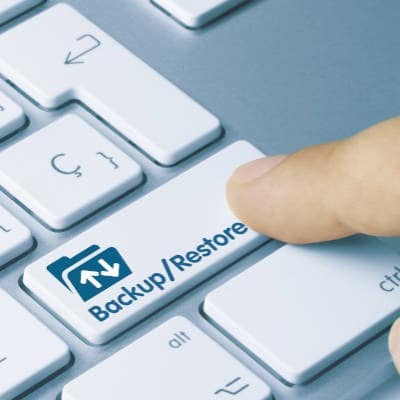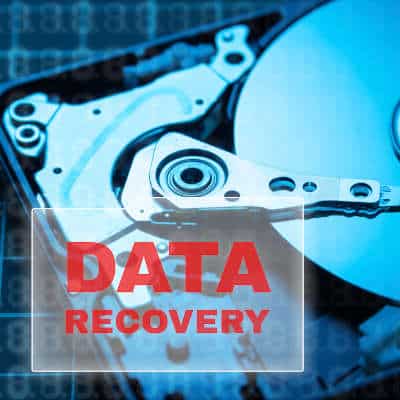Improved Productivity Not trusting your staff leads to hindered progress in your business, holding back how much you can accomplish. Neither you nor your team can be as productive as possible with you overseeing every detail of their work, as your micromanagement discourages initiative and motivation. Meanwhile, your other responsibilities are left neglected. Do your best to quash any urge you have to monitor your staff so closely, and your collective productivity will increase. Increased Communications The more you trust your team, and they you, the better the transfer of information will be between you. Feedback in both directions will be more honest, as you will be able to level with your team. Likewise, they will feel free to share their insights and potential issues they have identified. Either way, overall productivity can be improved through adjustments from all involved. Inspired Team Members One of the surest signs that an employee can receive that their work is appreciated is to allow them to do their jobs unimpeded–without excessive oversight or interference from the boss–and celebrate their accomplishments after the fact. This kind of trust generates a sense of responsibility for the employee to perform, and positive reinforcement to encourage their self-startership and initiative. Why would anyone want to leave this environment? Doing this can help minimize turnover and benefit your growth. What We Have to Do with Any of This Regardless of how energized and motivated your team is, there is only so much that can be accomplished with less-than-sufficient tools. SRS Networks can provide the solutions to both assist you in building mutual trust with your team, and to help you make the most of these improvements from an operational standpoint. To learn more about how we can help, give us a call at (831) 758-3636.
Defining Ergonomics There are a lot of different ways to approach productivity, ergonomics simply being the idea that a person in a comfortable position is more prepared to be productive than one being distracted by discomfort. In the office, this is somewhat easier to accomplish, believe it or not. Most offices are equipped with furniture and equipment intended for use in the workplace, which means that they are designed to better attend to these needs than what the average employee will have at their house. These pieces of furniture are designed to encourage a user to adopt a “neutral position” in order to minimize strain and stress, due to the amount of time that is anticipated to be spent in a given seat. An acceptably “neutral” posture is challenging to maintain in other environments. The typical office desk is built much differently than the typical dining room table, or typical card table, or typical lap as the employee lounges on the couch… the big difference being the position that the employee will be in as they do so. So, how does one go about maintaining the correct posture as they spend their work time at home? Understanding the Basics First, it is important to know exactly what a “neutral” posture looks like when positioned at the workstation. The hallmarks of a neutral posture include a straight neck, relaxed shoulders, wrists unbent, and limbs either held straight or bent at a 90-degree angle. When seated, it is recommended that you maintain a position where the thighs are parallel to the floor, with your seat providing plenty of back support. Your monitor should be at eye level, or slightly below it. While this is all well and good in the office, it isn’t as though your employees are likely to have the same setup available. Working with What They Have Fortunately, with a little improvisation, it is entirely possible for your employees to make these adjustments in their own home. Let’s say their monitors are too low. Raising them with books or small boxes would be perfectly acceptable for the short term. If they are working with a laptop, send them some peripherals, like a spare keyboard and mouse, for them to use with it. Use small pillows and cushions to adjust the height and support of the kitchen chair you are seated at, and if this makes your feet dangle in the air once again, use a step stool or other object to allow them a firm foundation. Make sure that you remind your employees to take care of their work resources, including their own bodies. After all, they aren’t going to be productive if their back is too sore for them to focus. We can help make sure their technology is up to the task, whether or not they’re working remotely. To learn more about the solutions available from SRS Networks to support your newly at-home operations, give us a call at (831) 758-3636.
Use More than One Monitor The first way you can go about cutting down the need for paper copies is by expanding your display space. By utilizing a dual-monitor setup you no longer will have the need to have printed copies of information to efficiently work on your computer. Anytime you have to work with multiple documents, you can just pull them up on the screen(s). Use Application-Based Options For every business need there is an application that can help make the task a bit easier. There are applications developed to cut out the need for paper copies of anything. Cloud platforms especially provide the ability for people to collaborate right alongside each other, removing entirely the need for paper copies of projects. Note taking applications also provide a solution for people that often need to take notes. Put Print Policies in Place With the use of solutions aimed to limit the need for paper, you can then go ahead and put in strong printing policies that work to reduce the access to printers. By putting in a necessary authorization platform between your network and your printers, you can substantially limit the access to the printer or copier, reducing the need for paper and ink/toner. You can also employ certain strategies such as using both sides of a piece of paper to print on, adjusting your fonts to produce less prints, and more to reduce the amount of paper you use. Simply put, you won’t see as much cost benefit if you continue to use the same amount of ink/toner. Digitize Your Backups Not being able to find an important file is very frustrating, which is why many businesses still use physical file folders and print off hard paper copies to store in them. All those extra steps to file away documents adds up to extra expense. By digitizing your data and storing it in the cloud, you not only have access from anyplace on nearly any device, but you also have copies that won’t be lost, moved, or stolen. Your data will be where you put it, in perpetuity. If you would like to get out from under the expansive costs that printing brings onto your business, call the IT professionals at SRS Networks today at (831) 758-3636. Our technicians can start you on your way to a paperless office as soon as today.
What Are the Benefits of a Routine in the Workplace? Routines, processes, procedures, however you refer to them, can certainly provide a few boosts if set up correctly. They Encourage Consistent Results It is often said that the definition of insanity is doing the same thing over and over again and expecting a different result, whereas the definition of consistency (“conformity in the application of something”) is the practical application of the opposite. When it comes to the workplace, consistent results are the goal, so a consistent process makes sense. They Save Time As a process becomes more ingrained and develops into a pattern, it will inherently become more efficient to carry out. Resultantly, turning your responsibilities at work into a routine process will ultimately enable you to contribute greater productivity. They Make Things Easier and Less Stressful There is a reason that a routine can casually be referred to as a “groove”… they inherently simplify a given goal and put less pressure on the employee. This means that the employee in question can commit to the task at hand with a clear mind. All of these outcomes mutually benefit the employee that follows the routine pattern and the business’ overall success rates, so it makes sense to try and replicate these outcomes in your own business. To help you and your team out, we’ve assembled a quick guide to help you develop and establish beneficial routines to support your productivity. How to Build Up and Reinforce a Routine Here are a few suggested methods for you to put to use as you are building habitual workplace practices. Remember that the day starts before work does. The way that you wake up and conduct yourself before work begins can have a significant impact on how the rest of the day goes. Get to sleep early enough to make sure you get enough rest, and make sure you are waking up at the same time each day. Make your bed first thing–that little victory alone can help add a little positivity to the day. Mentally prepare yourself for the day’s agenda and arrange your priorities ahead of time. Doing these kinds of things each day will gradually turn them into the things you just do. Dictate how your time is spent at work. Once you are in the office, you need to continue shifting your mindset. Instead of thinking of your schedule as a list of your obligations for the day, look at it as an asset that helps you to accomplish your goals efficiently and effectively. For instance, many people are inclined to postpone their challenging or frustrating tasks, but try doing the opposite and finish them off first thing. Bundle similar processes together to make it easier to transition between them while maintaining your focus. Restrict the time you spend doing semi-productive things, like checking your emails and messages. Disconnect to fully prepare for the next day. After you’ve filled your workday with productive activities, it’s time to leave and reset for the next. Take some time to review what you accomplished, highlighting three of the most positive events, and then disengage from workplace concerns as much as you can. Spend some time with a personal hobby–not just relaxing, but actively engaging in something that commands your attention–to really […]
It makes sense that any kind of redundancy would be frowned upon, given that business operations today have become so focused on efficiency. The difference is that the redundancy that we are discussing here has an intended purpose. Let’s examine this intentional redundancy in action with the 3-2-1 Rule of data backup. The 3-2-1 Rule This “rule” is pretty generally accepted amongst IT professionals. It sums up to the following: 3. Three copies of your data should exist 2. Two of these copies are backups 1. One of these backup copies should be located offsite But why two backup copies? Wouldn’t one of them be mostly redundant? It would, and that’s the point. Consider the possibility that your on-site backup could be lost in the same disaster that destroys your original copy. Your backup isn’t going to be of any help then. What if you found out that your offsite data center suffered a disaster, and so your backup is gone, just as a minor data issue takes place in-house? Your second backup is just that, a backup to your backup. Plan C, when Plan B doesn’t work out. A Timely Message It isn’t hard to see why this kind of reliability is valuable to a business, considering what has been happening in the past few weeks with the COVID-19 outbreak. Businesses everywhere are either closing up shop or shifting to remote operations for the time being, and as this has been going on, business locations are being targeted. Theft and even vandalism can be very real causes of data loss, which means that properly backing up your data is a must. This situation also highlights one of the reasons that we really push the cloud as the best option for your backups. Not only is your data protected in the cloud, it is also accessible to your team, allowing them to work from home if need be until it is safe to return to normal working conditions. Of course, nobody should hope to have this happen, but not being prepared for it is just foolish. Again, we recommend the 3-2-1 Rule, as it practically guarantees that you aren’t without your data. If you need help setting up your backup solution, we can help with that, too. Call SRS Networks today to learn more about how working with us can ensure that your IT is reliably available to you when you need it. Reach out at (831) 758-3636.
What is BlueKeep? The Bluekeep vulnerability is a strain of malware that was discovered in May 2019, and was patched soon thereafter. Healthcare providers wanted to ensure that BlueKeep wasn’t anything like the EternalBlue situation just a short time ago. EternalBlue was the exploit hackers used that allowed the WannaCry ransomware attack to have such a lasting impact on the industry. Unfortunately, many health maintenance organizations didn’t apply the necessary patches; and with the three operating systems (Windows 7, Windows Server 2008, and Windows Server 2008 R2) that the BlueKeep vulnerability affects already lacking support, the situation is definitely problematic. This is more true today as the COVID-19 virus continues to spread rapidly, putting unprecedented pressure on these hospitals and other healthcare organizations. Even today, over 20 percent of all BlueKeep-vulnerable devices remain unpatched and nearly 45 percent of all connected medical devices remain vulnerable to attack. That includes some very important machines such as x-rays, anesthesia machines, and care-driven technologies vulnerable for an attack. Is your practice up-to-date? If you would like our professional IT experts to do a thorough assessment of all of your practice’s technology to see if your systems are patched and up-to-date, call us today at (831) 758-3636.
Prepare Proactively Just as with any move, strategizing the day that you are supposed to shift to your new location isn’t an option. You need to take everything into account ahead of time, and adapt your plan as new information becomes available and circumstances change. You should also keep in mind that the moving process is going to be a lengthy one, and that it will require investments of both time and capital. Therefore, you need to prepare yourself and your organization for all of these considerations ahead of time. Deciding On A Space Of course, if you plan to move, you need someplace to move to. This means that you have to make quite a few decisions concerning where your new space should be and how it will be financed. You have the option to rent out space in a business park or purchase a new building for yourself. You could also lease space, if you don’t want to purchase property but plan to stay in the same area for some time. Your budget and your business plan will dictate which option is the best for you. Understanding Any Rules If you do elect to rent or lease space, you also need to know what your host building requires of its tenants as they move in. You may only be allowed to move in after normal business hours, or need to request access to a service elevator. Understanding these rules will allow you to better plan for your move. Determining The Floor Plan Once you have decided upon a space, you will have to decide how your employees and their resources will be distributed in your new office. How will your workspace be laid out? Will you use an open plan that encourages collaboration, a closed plan that provides increased privacy, or a modular plan that serves as a hybrid of the two? Do you need private conference rooms and other meeting areas? What about a break room, a server room? Your particular industry could easily impact these needs and your priorities as well. Determining Your ISP Nowadays, Internet service is essential for a business’ operations, so you need to make sure that you sign up for a service plan that fits your needs–both current, and projected. Investigate your available providers and compare what they have to offer to get your business the best deal. Planning Your IT and Office Communication Systems As soon as you have established when your move is to take place, you need to begin preparing your organization’s IT for your move. In doing so, you should keep a comprehensive inventory of your hardware and software, and what the plan for each component is to be. This will cover all workstations, storage solutions, and communication tools, like VoIP solutions. Moving into a new space is a big process, so why not let someone else take care of a few parts of it? SRS Networks can help you with your move where your technology is concerned. To learn more about our many IT services, give us a call at (831) 758-3636.
Here are some of the situations that businesses can benefit from proper data recovery maintenance: “…Oops.” At the end of the day, the most prolific threat to your data is your staff, the people you’ve hired to put all that data to use, including the person who looks back when you look in a mirror. I know, what a plot twist. However, it doesn’t make it any less true. Human error is one of the most common reasons that a company experiences data loss on any scale, mainly because there are so many ways for someone to make a mistake. Maybe someone deletes something accidentally, or takes the only copy of something offsite only for it to be lost or damaged. Therefore, it is crucial that you educate your users on proper practices for handling data, in addition to maintaining a comprehensive backup of your data to draw from if the need should arise. “In today’s weather…” Natural disasters can certainly live up to their name where your business’ data is concerned. Regardless of what the forecast says, your on-site infrastructure and any data it holds can be put at risk if a storm is severe enough. Taking this into consideration, any good provider will make sure that your data isn’t only saved in one location. Look at it this way… what good is a data backup, if that backup is wiped out by the same disaster that made it necessary in the first place? This is precisely why we always recommend that at least one copy of your data is preserved safely off-site. “Wait, my computer isn’t working right…” There are plenty of ways that an issue with a device itself can lead to data loss. Viruses can infect critical systems and take up the resources you need to be productive (and to save your data), drives can fail at the worst times, and the data stored on your system can be corrupted. If this is the case, keeping a backup can help save data that would likely have been lost without the backup. Finally, many small businesses assume that their size protects them from the interest of hackers. Unfortunately, they assume wrong. With many attacks now automated, cybercrime has become far easier to perpetrate. Threats like ransomware and other attack vectors can often require businesses to wipe their infrastructure to remove the infection. In these cases, a backup can prevent these actions from being a “mutually assured destruction” kind of strategy. Data recovery comes in handy in situations of any size and importance. SRS Networks can help you implement the solutions necessary for you to maintain a proper data recovery strategy. Learn more by giving us a call at (831) 758-3636.
Gamification of Business Tasks Gamification is widely used in parenting to convince children to cooperate on things that may nor be in their best interests. As a business owner or decision maker, your employees come to work with their own expectations. To enhance those expectations, gamifying tasks may be just the thing your business needs to take operations to the next level. The psychology of gamification is that of making even trivial tasks seem important by presenting them as a competition. If this doesn’t sound realistic, consider the concept of “employee of the month.” Why Gamification is Effective Human psychology is a big part of why gamification has an impact. As a species, human beings tend to be strongly motivated by certain desires, namely: Recognition – I want my efforts to be paid attention to. Competition – I want to win. Distinction – I want to be rewarded for my efforts. Inherently, most tasks at work don’t carry anything but negative feedback. By gamifying even the most menial task, it injects the capability of fulfillment. Employees will be more driven if they a) think they are competing against their work “rivals” and b) if they think they can get the recognition of being superior. As long as the incentives continue, you can expect that these workers will be more driven to accomplish better work than without those incentives. Adopting Gamification If you are considering gamifying your more rote tasks, you have a lot of options in which to do so. Sure, different tasks, different workflows, and different industries will have different things they can do to jazz up workplace competition, but choosing how to accomplish this (i.e. what the game is), and what incentives there will be as rewards is all up to you. Do you think that gamification will work for you? Leave your thoughts and suggestions in the comments section below.
What is Automation? Every office has those menial tasks that nobody wants to take the time to do, but really need to be done at some point. Fortunately, as technology has advanced, so has the capability for these tasks to be completed with minimal human engagement. Automation (technically, business process automation) is simply the use of technology to simplify and minimize the amount of work and attention your human resources need to contribute in order to reach an objective. As automation has received a bit of a bad break as a job killer, it is important to clarify that the kind of automation we generally talk about is intended to lighten the rote responsibilities of your employees, freeing their time to focus on other, more productive tasks and concerns. When used in this way, business process automation can help boost your employees’ job satisfaction, consistency, and efficiency (although the job-killing reputation that automation has garnered might lead to some resistance at first). Not sure how you might put it to use in your operations? We have a few suggestions that you may find intriguing. How to Leverage Automation When all is said and done, automation could conceivably assist with any task. However, we want to focus on the ways that will really provide your business with the most value, so mull over some of these applications (again, just some of your potential opportunities). Customer SupportHow much time is spent answering calls, or emails, or Facebook messages, all asking precisely the same question? Chances are, too much. That’s why many automated customer support options are so useful – they give you an alternative way to provide support that can often resolve your contact’s quandary without involving you or your employees. This kind of vetting reserves your employees’ attention to issues that really require it. ComplianceMany industries are subject to assorted requirements that concern different aspects of their operations, passed down by the government or by the industry itself. Automation allows you to set procedures that meet the prescribed guidelines to appease regulators, saving you from further trouble and effort later. CommunicationThere are a lot of moving parts involved in any business (especially if automation is put in use), so there are going to be certain people who need to be kept in-the-know. These people may be internal resources, or operate outside of the business. This even includes clients and customers. Regardless, automation can help ensure that there is always clear communication, without anyone having to remember to send a message. Naturally, there are far more ways that your business’ operations could be automated behind-the-scenes, so don’t hesitate to reach out to us and discuss what your options might be! Our professionals are here to help. Call (831) 758-3636 today.










